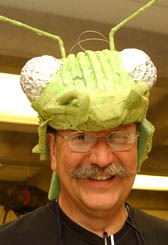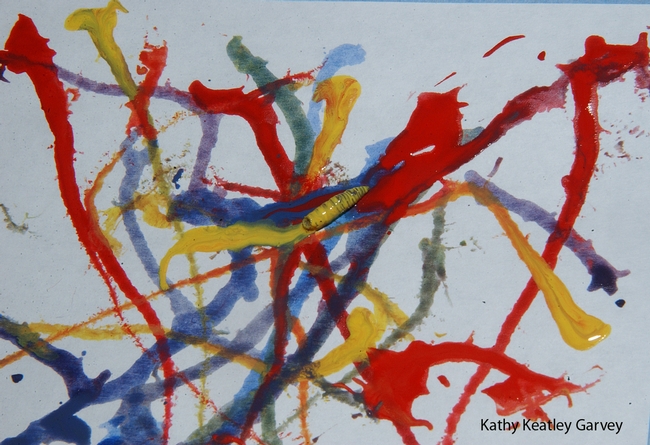
And ants, honey bees, bumble bees, beetles, and skeeters, oh yes!
Don't see "Ewww!" Say "Wow!"
Those are just a few of the bugs that will be part of the UC Davis Department of Entomology's activities during the 98th annual campuswide UC Davis Picnic Day on Saturday, April 21.
Entomological activities will take place at two sites: Briggs Hall on Kleiber Hall Drive and the Bohart Museum of Entomology, located at 1124 Academic Surge on California Drive. Hours are from 10 a.m. to 3 p.m.
Forensic entomologist Robert Kimsey, coordinator of the department’s Picnic Day activities, promises not to disappoint. Indeed, thousands of people flock to the Bohart and Briggs every year just to see the bugs. What's a picnic without bugs? Bohart, Briggs and bugs. Now that's alliteration.
At Briggs, the popular events will include Maggot Art, termite trails, cockroach races and honey tasting, as well as displays featuring forensic, medical, aquatic, apiculture and forest entomology. Exhibits also will include such topics as fly fishing/fly-tying, insect pests of ornamentals, and pollinators of California.
Visitors to Briggs can cheer for their favorite cockroach at the American cockroach races; watch a termite follow a line drawn with a Bic ink pen (they follow the line because the ink acts as a pheromone or attractant) and create a Maggot Art painting suitable for framing.
Maggot Art, a term coined and trademarked by forensic entomologist Rebecca O’Flaherty, a former doctoral candidate at UC Davis, involves dipping a maggot in non-toxic, water-based paint to create art. O’Flaherty launched Maggot Art in 2001 as a community outreach project to teach--and reach--youths while she was studying entomology at the University of Hawaii.
At Briggs, the UC Statewide Integrated Pest Management Program (UC IPM) will "display information and tools for managing pests in homes and gardens," said Mary Louise Flint, UC IPM's associate director of urban and community IPM and an Extension entomologist with the UC Davis Department of Entomology. "We'll give advice on managing pests with less toxic, environmentally sound IPM methods. We will have Quick Tips to hand out, people can try out our touch screen IPM kiosk to answer questions and we will also be distributing live lady beetles (aka ladybugs) for children."
Those polka-dotted ladybugs are a big hit--and an even bigger hit if you watch them chow down aphids in your garden.
Also at Briggs, plans call for a “Bug Doctor” to answer insect-related questions from the public. Last year’s “Bug Doctors” included Michael Parrella, professor and chair of the UC Davis Department of Entomology. There's another "doctor in the house," too: Dr. Death. That would be forensic entomologist Robert Kimsey perched at a microscope and inviting folks to have a look-see.
The Bohart Museum of Entomology, home of more than seven million insect specimens, will showcase displays of specimens and live pollinators. The theme: "Insects Are Forever." Bohart Museum officials insist that insects can be a girl’s best friend (just like diamonds or dung beetles). They'll feature photos of UC Davis women entomologists. The Bohart Museum also will include a live “petting zoo” where visitors can hold Madagascar hissing cockroaches and walking sticks.
Also at the Bohart, native pollinator specialist Robbin Thorp, emeritus professor of entomology, and graduate student Emily Bzdyk, who studies with major professor Lynn Kimsey, will provide a live display of pollinators, including bumble bees, carpenter bees, leafcutting bees and green metallic sweat bees.
Is this going to "bee" fun or what?
Perhaps, just perhaps, the entomologists can steer folks clear of saying "yecch!" and "ewww!" and encourage them to ponder the wonderful world of bugs.
Attached Images:

Maggot Art involves maggots dipped into non-toxic, water-based paints. (Photo by Kathy Keatley Garvey)

A termite follows the "pheromone" or chemical attraction of a Bic pin. (Photo by Kathy Keatley Garvey)

American cockroaches will compete in the cockroach races. (Photo by Kathy Keatley Garvey)